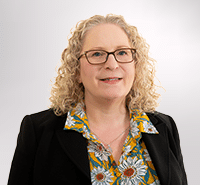-
InsightsInsight - Tax Planning - POSTED: October 24 2017
Landowners urged to prepare now to avoid high tax bill
Land which has not yet been sold but has been earmarked for development or has ‘hope value’ can lead to unexpected tax bills. Mary Rimmer explores…
- Share this article
- Print this article
-
-
It is becoming increasingly common with land prices at a peak for land owners to sell land to developers or to develop it themselves as the benefit of selling land is high. Land which has not yet been sold but has been earmarked for development or has ‘hope value’ can lead to unexpected tax bills.
This may give rise to tax liabilities, most notably issues with inheritance tax (IHT) and capital gains tax (CGT), and these should be considered at an early stage to avoid any nasty tax surprises.
IHT and CGT
For IHT purposes, certain farm land and buildings can benefit from Agricultural Property Relief (APR) if it is occupied by the owner for the purposes of agriculture for two years before death/disposal or owned for seven years when occupied by a third party.
As farms are usually run as partnerships, APR also interacts with Business Property Relief (BPR), which is available on partnerships which may not be eligible for APR. This can fill the gap between the agricultural value, which should get APR, and the market or hope value. For this relief the partnership activity needs to be more trading than investment.
The disposal can trigger a CGT charge based on the market or hope value at that time. It may be possible to hold over the gain for CGT purposes until any future sale of the land and, in certain circumstances, entrepreneurs’ relief might apply, which could be more favourable.
The problem with hope value
Obtaining planning permission can be a lengthy process and the landowner may not survive to see a sale through.
If planning permission is granted during the owner’s lifetime, and the hope value is realised at that time, the value of their estate subject to IHT is increased. Once the land has been sold for development, the sale proceeds themselves will no longer benefit from APR or BPR unless the money is reinvested in the farm or another qualifying business activity.
This could give rise to a difficult situation where the owner’s estate holds cash or development land which is deemed to be an investment business, rather than trading, and therefore jeopardising any claim for BPR.
Such an IHT charge would be more onerous than a CGT charge and may make a gift, and associated CGT, more attractive than leaving the asset to grow in the estate and face IHT.
If the land is transferred to a trust at an early stage before hope value is realised, it is possible to remove the land from the owner’s estate at a lower market value and avoid a larger IHT charge on death. This ensures the increase in the value is contained within the trust rather than within the owner’s personal estate.
How we can help
Brachers specialise in estate and agricultural business planning, helping farming families and land based businesses plan carefully for the future. If you would like further information about setting up a trust or making your will, please contact Mary Rimmer by email or on 01622 655296.
This article was first published in the October 2017 edition of South East Farmer.
This content is correct at time of publication
Can we help?
Take a look at our Tax Planning page for useful information, resources, guidance, details of our team and how we may be able to help you
-
Key contact:
Get in touch
Please fill out the below form or alternatively you can call us on 01622 690691

